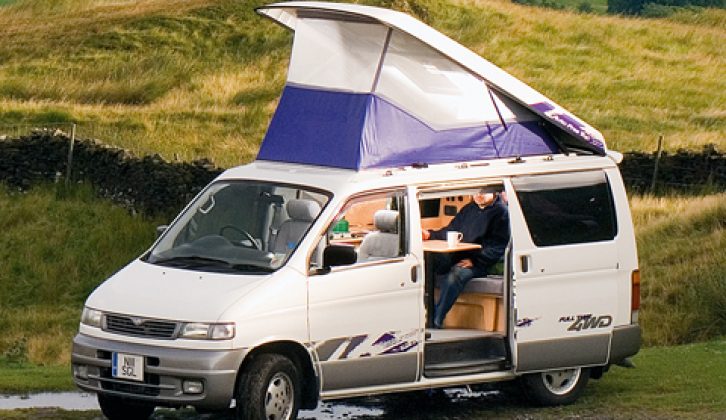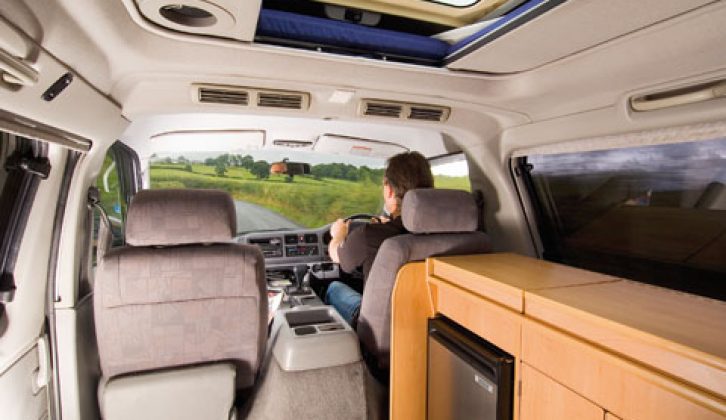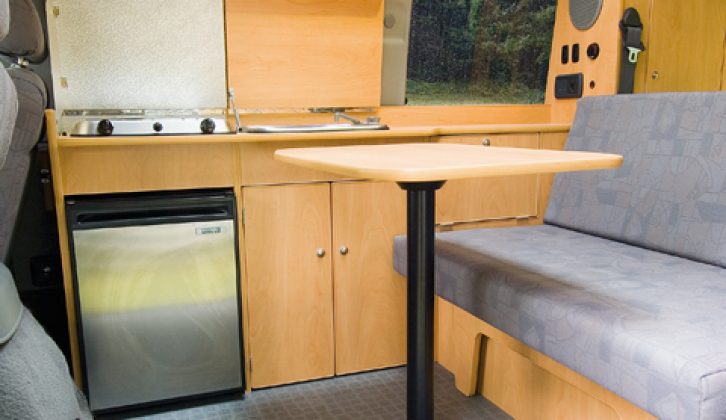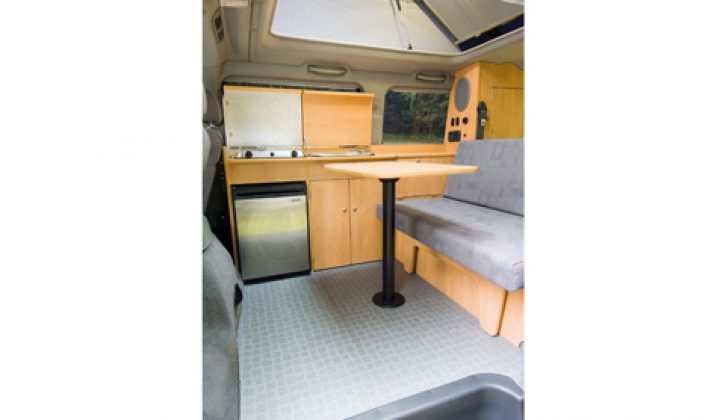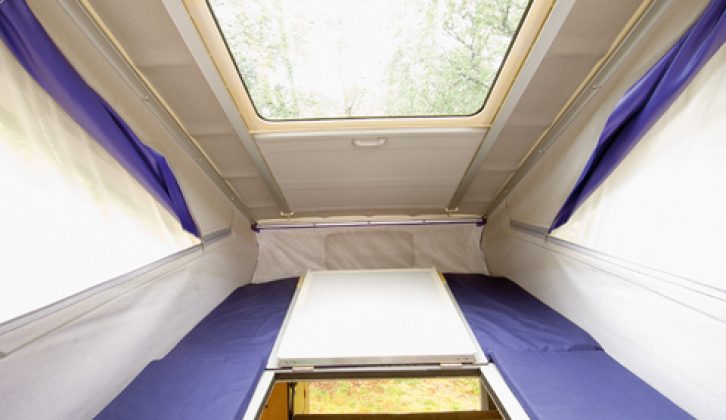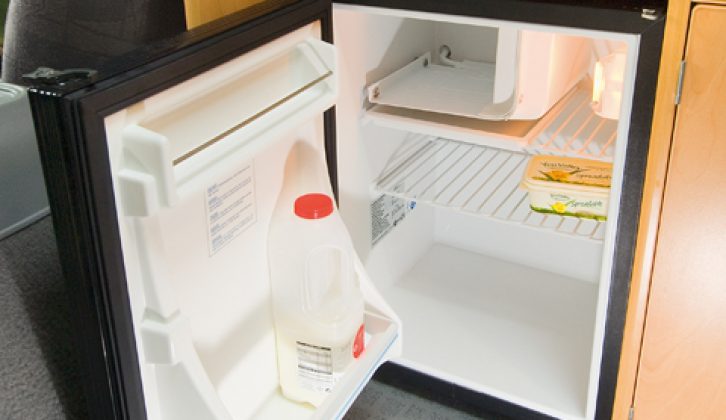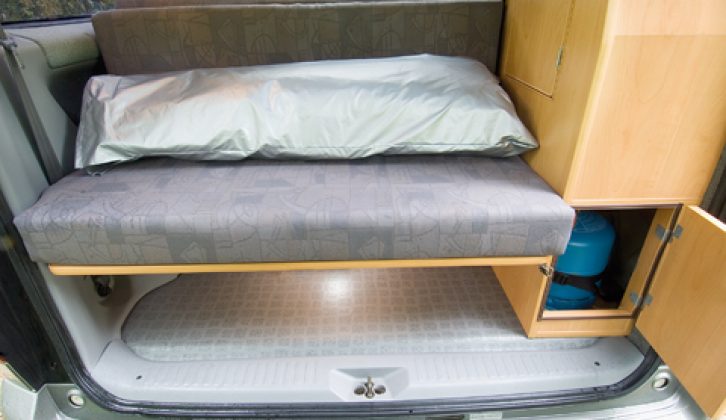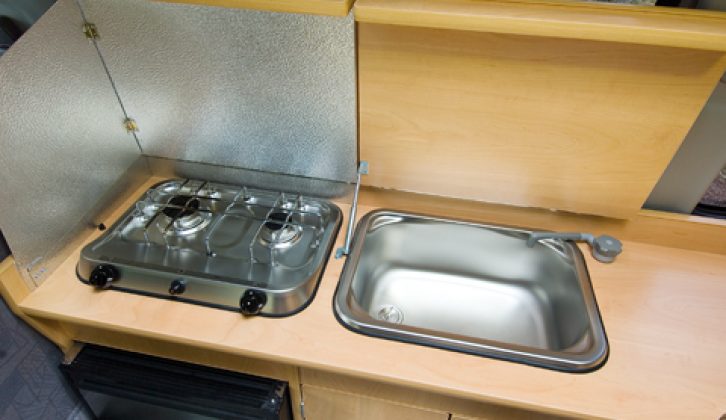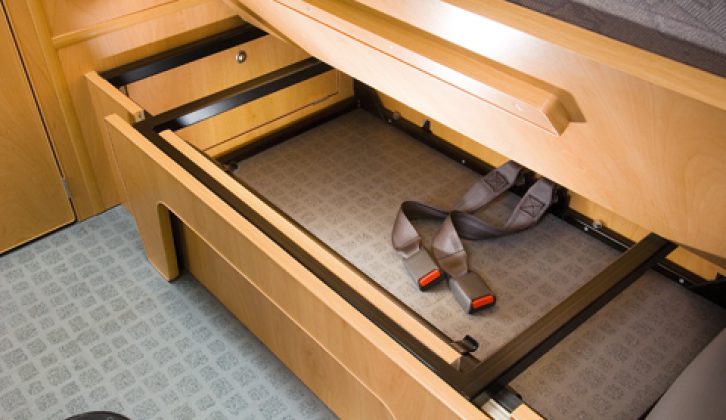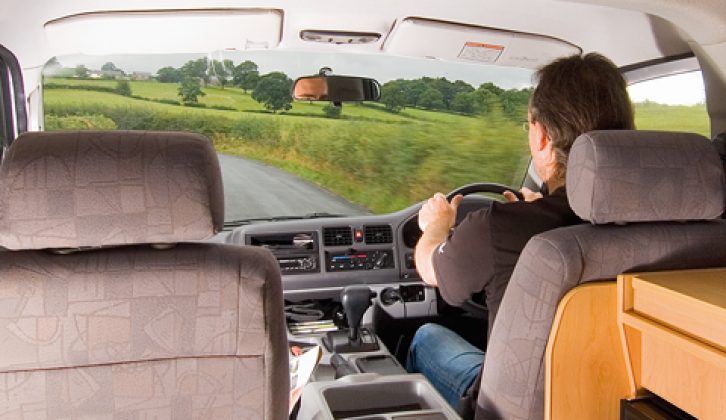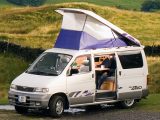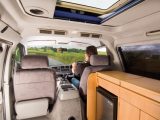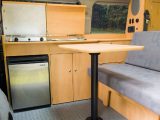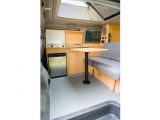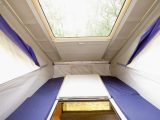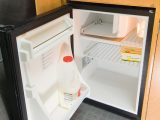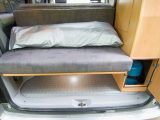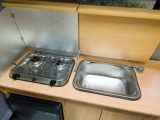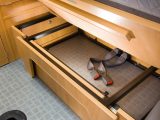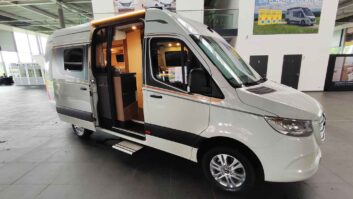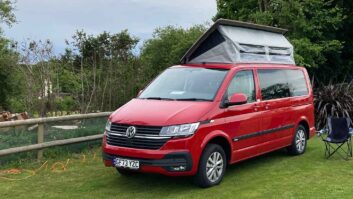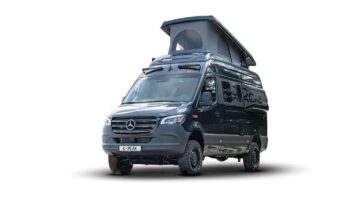Verdict
Let’s put this into context: this is a ten-year old vehicle with a new conversion. It’s one of the smallest campers on the market, but offers a lot more than a similarly priced Volkswagen. Overall, this quirky Japanese import combines the benefit of a driveable day vehicle with all the facilities of a basic camper. It does this with some style and better levels of specification than you could expect from European campers of equivalent age.
Pros
Quirky styling
Good-quality conversion
Electric elevating roof
Cons
Short, thin mattress
Fuel economy
Dated engine
The Bongo Friendee is the most oddly named ’van in Britain. It is a grey import, never having been sold outside Japan where it was made until 2000 (so, any model you buy will be used).
Most Bongos are automatics. The reason these diminutive vehicles have flooded the British market in recent years is that they convert to well-specified, affordable campers at a lower price than VW-based alternatives. The 1996 model we tested has a full camper conversion from Wellhouse Leisure, which adds £4500 to the price. So despite the vehicle itself being a used model, the conversion is brand new. Given its size, it is best to think of the Bongo as an MPV that can double as a camper – in fact, in its pre-converted state it’s a six-seater with two rows of seats that fold down to make a bed. Several UK converters offer differing floorplans, although some buyers prefer to keep the original seats. We recommend joining the owners club, if only for the access to useful parts and services information it provides: go to the website at www.bongofury.co.uk.
Plus: See our Mazda Bongo Friendee Buyer’s Guide:
Living
The bench seat is sufficiently comfortable for two to be able to sit there and read but we missed being able to make use of swivelling cab seats.
The single-leg table is fine to use when drinking a cup of tea or eating a snack but with the limited dimensions of the Bongo’s interior, main meals can prove tricky.
Kitchen
The cooking area is basic: two burners and only cold water. However, there is just enough room to make tea and toast, or perform other basic culinary operations.
The wooden hob and sink covers are sturdy enough to use as a worktop but the cooker’s cover restricts the use of larger pans. There’s a cupboard under the sink, but no cutlery drawer.
The Waeco 40-litre compressor refrigerator is a practical piece of kit. It runs on battery power so the contents of the fridge and its tiny freezer section are not at risk of becoming warm, even if the vehicle is parked away from a hook-up for several hours.
Washroom
Here is the reason why camper owners need to stay at campsites: the Bongo’s only sanitary provision is a manual-flush Thetford Porta Potti. It is better than a ‘bucket and chuck it’, but only just.
Beds
The bench seat bed is comfortable but short. Instead, providing you can climb up there, the roof bed is by far the best option, with lots of headroom and a zip-around half-height flyscreen for ventilation. Its only failing is that the mattress is thin, so we would recommend fitting a new one or using some kind of camping mat, or bed foam that has been designed specifically for use on made-up seat beds.
Storage
The classic VW camper-type floorplan allows for a small rear boot from where you also have access to the gas cylinder.
There’s a small, offside, corner wardrobe, a hinged flap opening into the seat base and a double under-sink cupboard, with a locker at the rear. Wellhouse can also fit lockers above the kitchen.
Technical Specifications
| Payload | 560 kg |
| MTPLM | 2400 kg |
| Shipping Length | 4.58 m |
| Width | 1.69 m |
